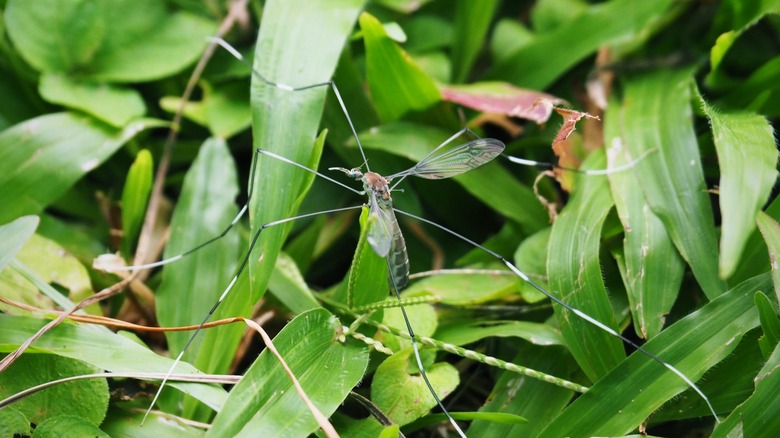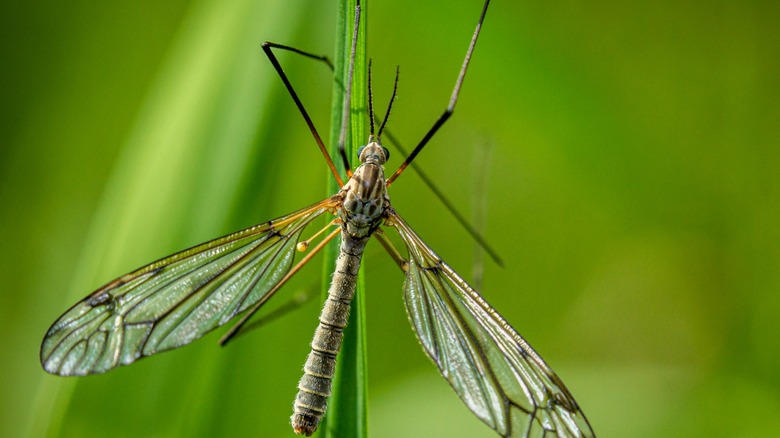The Unexpected Impact Craneflies Can Have On Your Lawn
We may receive a commission on purchases made from links.
Crane flies are those creepy-looking flying insects with abnormally long legs that you might have seen flying around your yard during the summer months. But having adults flying around your lawn is normal, and usually isn't cause for concern. In fact, Nico Franz, a professor and curator of insects at Arizona State University, called them fairly harmless, "short-lived insects." "They do not have habit of being blood-sucking parasites nor do they transfer diseases," he said (via KJZZ). The problem is with their larvae, which are called leatherjackets.
Leatherjackets offer an irresistible delicacy for predators like birds, badgers, and foxes — predators that think nothing of tearing up large sections of new grass in their frenzied hot pursuit of them. In the grub stage, they live underground and chew on the fresh grass roots of your lawn. This makes these particular insects a double danger to your lawn, especially in large numbers.
How to spot a problem
If you see a lot of craneflies flying around, it's probably not a problem. But if you start noticing patches of your lawn where the grass turns yellow or brown and dies, try lifting up a patch of the affected turf. If leatherjackets are the cause, you will see them. They look like fat little worms or grubs with no legs and no obvious head or tail. Many birds will search for them, and you will notice little holes in the dirt that they make with their beaks when reaching for them. Patches of loose and disturbed soil or sod may be present.
Sometimes, they will infest gardens and cause damage to the plants at the soil level — typically stems or stalks, though they can even kill seedlings and small plants. They can invade flowers and vegetables alike. However, it's important to note that most species of craneflies are not dangerous and don't cause harm to plants, and in fact are considered to be part of a healthy garden.
Fighting leatherjackets with nematodes
If you do have a problem with leatherjackets, they are extremely difficult to get rid of.There are no chemicals currently available that kill leatherjackets. What does that mean? It means fighting larvae with microscopic worms called nematodes. These are a type of roundworm that infects leatherjackets with fatal bacteria through body openings. If you suspect an infestation, it will involve scarifying your lawn and then fighting leatherjackets with nematode products, including Nemasys Leatherjacket Killer.
Before you can use this product, you'll have to scarify your lawn, an aggressive process that uses metal blades to thoroughly dethatch the lawn. As aforementioned, it is extremely difficult to get rid of this problem. To limit your chances of leatherjacket infestation, try to prevent thatch from building up on your lawn in the first place. Regular aeration is important as well as scarifying the surface. Thatch is the ideal egg-laying ground for crane files, so keep it to a bare minimum.

